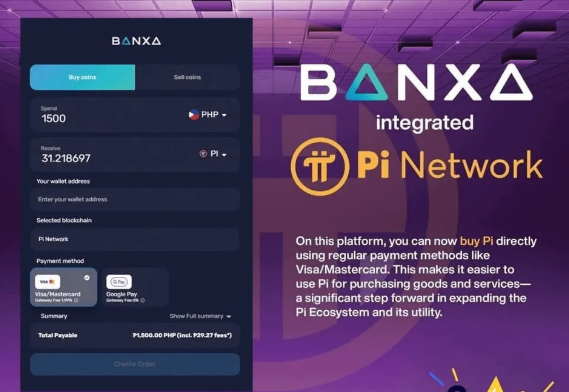This update marks a significant strategic shift for Pi Network — moving toward a more mature, compliant, and possibly commercialized infrastructure. Whether this turns into a game-changing move or a user-exodus trigger depends on how the team balances user trust with regulatory ambitions.
In-Depth Analysis & Potential Implications

1. Breakdown of Core Update
-
Mandatory KYC for Wallet Activation
Users are now required to complete identity verification (KYC) to access full wallet functionalities. This enhances regulatory compliance but compromises user anonymity. -
Integration of Banxa for Fast-Track KYC
Collaboration with third-party KYC provider @BanxaOfficial simplifies the process to under 5 minutes. However, it may raise concerns over data sharing and privacy. -
Starter Pi Purchase Mechanism
Users may need to purchase a “Starter Pi” to activate the wallet — a possible attempt to filter genuine users via micro-payments. -
Mainnet Migration Thresholds
Users must complete a checklist (e.g., identity linking, security verifications) to transfer mined Pi to the mainnet, effectively slowing token circulation.
2. Underlying Motivations & Strategic Intentions
2.1 Regulatory Compliance Drive
-
Responding to Regulatory Pressures
The enforced KYC aligns with growing global crypto regulations (e.g., FATF Travel Rule), preparing Pi for potential listings on major exchanges. -
Potential Data Monetization
With over 45 million users, verified identity data may become a valuable asset — potentially offered to financial institutions or advertisers in the future.
2.2 Selling Pressure Control
-
Delayed Token Release
By making mainnet migration complex, Pi can delay mass sell-offs by early miners, protecting the Pi token price in early phases. -
“Sunk Cost” Mechanism via Starter Pi
Users are nudged into making upfront purchases, increasing their commitment and reducing the likelihood of exit.
2.3 Ecosystem Consolidation
-
Filtering for Loyal Users
Dual barriers of KYC and paid activation deter airdrop hunters and ensure higher user engagement. -
Preparing for DApp Ecosystem
With full wallet functionality, Pi may soon support payments, lending, and other applications — enabling real-world utility.
3. User Risks & Challenges
-
Privacy Breach Risks
As a third-party provider, Banxa could be vulnerable to data leaks or misuse — either from hackers or internal threats. -
Rising Financial Barriers
Requiring fiat payments (e.g., $100 for Starter Pi) could exclude users from developing regions. -
Technical Complexity
Mainnet migration involves detailed procedures that may be confusing for non-technical users, potentially leading to token loss or wallet lockouts.
4. Long-Term Impact on Pi Ecosystem
Positive Outlook
-
Increased Legitimacy
Regulatory alignment and KYC might attract institutional investors and enable exchange listings (e.g., Coinbase). -
Developer Confidence
A verified user base may attract developers to build on the Pi blockchain, boosting adoption.
Potential Drawbacks
-
Centralization Concerns
Forced KYC and asset control could spark backlash from the community and node operators. -
User Attrition
If migration delays or Starter Pi costs are too high, users may shift to more accessible competitors (e.g., Sidra Bank).
5. User Action Plan
🔹 Short-Term
-
Evaluate Privacy Preferences
If you’re unwilling to undergo KYC, be prepared for restricted access — or consider exiting the ecosystem. -
Be Cautious with Payments
Only purchase Starter Pi via official channels. Avoid unverified third-party transactions.
🔹 Long-Term
-
Participate in Governance
Use node voting mechanisms to push for transparency on KYC data usage and privacy protection. -
Diversify Token Storage
Post-migration, consider moving part of your Pi holdings to hardware wallets to reduce reliance on a single platform.
© Copyright notes
The copyright of the article belongs to the author, please do not reprint without permission.




